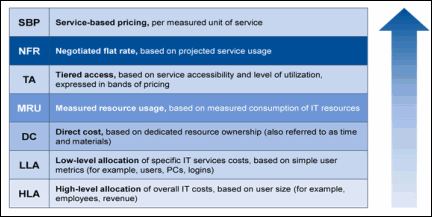CIO Unplugged 12/7/11
The views and opinions expressed in this blog are mine personally and are not necessarily representative of current or former employers.
Transformation Through the Written Word
My nephew Jordan, at the time a high schooler, was thinking about careers. Spring Break of 2009 found him shadowing “Uncle Ed,” exploring healthcare. He awoke with me each morning for 5 a.m. workouts and remained engaged until we returned home for 6 p.m. family dinners. Free time was spent developing content for an innovation workshop he would help me lead for one of our hospital leadership teams.
We nailed the workshop. The hospital president was so impressed with Jordan’s facilitation techniques that he offered him a job upon college graduation. We left that Friday session exhausted but high, ready for a Starbucks reward! Immersed all week in healthcare and spending time with physicians and leaders, his career decision crystalized. After graduating as class valedictorian, Jordan began an eight-year journey as a University of Colorado Medical School BA/BS-MD student, one of only ten chosen in the nation.
An elite runner, Jordan serves me humble pie each time we connect. We met up a couple months ago and put in a few hard miles. A college freshman, he asked me for my views on Gawandi’s The Checklist Manifesto and how it has influenced our culture. A month later he asked me about Johansson’s The Medici Effect; What Elephants and Epidemics Can Teach Us about Innovation.
We met up recently in Denver, and, during this run, he wanted to know my views on Johnson’s Fire in the Mind; Science, Faith, and the Search for Order. “Uncle Ed, where does science end and religion begin?” He loses me on the hill. Is this my nineteen-year-old nephew?
The more I learn about his medical school program and curriculum, the more impressed I am. They have something special going down at UC School of Medicine with their focus on stimulating personal and professional growth through book studies. Every other week, these future physicians tackle another book and debate.
Book and debate reinforced my IT department’s approach. I was not a reader in my youth, but as my hunger grew for leadership, I began devouring the written page. A causal correlation emerged. The more I learned, the more effective I became.
I asked my direct reports to read with me, and I observed the same causality. If these book studies were helpful for my teams, then what about my entire organization? Twelve years and counting, my desire to be a continuous learner has not abated. I have seen the transformative impact on my organizations. Hearing about Jordan’s medical school inspired me to continue pressing forward.
Many people stopped learning the day they graduated. Having book studies in the work place carries numerous benefits. Studies remove excuses and make learning convenient. The studies bring a cross-section of individuals together who might not otherwise meet each other. Cohorts ensure accountability, and nobody shows up to class unprepared. Relationships form. Engagement deepens. Leadership is honed. New ideas stimulate innovation. Sometimes we invite our strategic partners. Learning happens. People grow.
How to develop a program in your workplace:
- Charge a modest fee for the class. Return the fee for 80% attendance. Unreturned fees are donated to United Way.
- Lead the first set of classes yourself so you can model the process. Then delegate teaching to your direct reports. Expand to line staff as you find alignment between a person’s passion, ability to teach, and the general need for the topic.
- Classes early in the day have the most traction.
- Books with associated workbooks work especially well.
- Meet weekly and run each class 6-8 sessions for one hour.
- Offer a variety of classes quarterly.
Here is a sample listing of the books we have leveraged through the years. While we have our reliable classics, we always scan for new books. And yes, we have gone digital:
- 17 Irrefutable Laws of Teamwork
- 21 Indispensible Qualities of a Leader
- 21 Irrefutable Laws of Leadership
- 360 Degree Leadership
- 5 Dysfunctions of a Team
- A Long Obedience in the Same Direction: Discipleship in an Instant Society
- A Message to Garcia
- Accounting for Non-Accountants
- Application Stuff for Non Apps
- Axiom
- Blown to Bits
- Built to Last
- Business Etiquette for Dummies
- Checklist Manifesto
- Churchill on Leadership
- Clever: Leading Your Smartest, Most Creative People
- Competing on Analytics: The New Science of Winning
- Computer Factoids
- CPHIMS Prep Guide
- Creative Whack Pack Deck-Book Set, Success Edition
- Cyber Warfare
- Death By Meeting
- Developing the Leader Within You
- Disintegration
- Drucker on Leadership
- Emotional Intelligence
- Finance for Dummies
- Financial Peace
- First, Break all the Rules
- Fish
- Getting to Plan B: Breaking Through to a Better Business Model
- Good to Great
- Gung Ho!
- Hardwiring Excellence
- Heart of Change
- Here Comes Everybody
- High Five
- Higher Standard of Leadership
- Hospital Management
- Hospitals: What They Are and How They Work
- How to Give a Damn Good Speech
- How to Listen to God
- Human Sigma
- If Disney Ran Your Hospital
- Innovators Dilemma
- Innovators RX
- Inside the Magic Kingdom
- IT Risk
- It’s Your Ship
- Jack; Straight from the Gut
- James and the Giant Peach
- Judgment: How Winning Leaders Make Great Calls
- Kick in the Seat of the Pants: Using Your Explorer, Artist, Judge, & Warrior to Be More Creative
- Lead with Luv
- Leadership (Giuliani)
- Leadership Lessons Learned
- Leadership Secrets of Attila the Hun
- Lincoln on Leadership
- Making Teleworking Work: Leading People and Levering Technology for High Impact Results
- Medici Effect: What Elephants and Epidemics Can Teach Us about Innovation
- Now Discover Your Strengths
- Orbiting the Giant Hairball
- Outliers
- Overcoming the 5 Dysfunctions of a Team
- Please Understand Me (Myers-Briggs)
- Raving Fans
- Redefining Global Strategy
- Safe Patients, Smart Hospitals,
- Same Kind of Different as Me
- Servant Leadership
- Social Intelligence
- Strengths Finder 2.0
- Sustained Innovation
- Technical Stuff for Non Techies
- The Art of War
- The Big Switch: Rewiring the World, from Edison to Google
- The Black Swan
- The Element: How Finding Your Passion Changes Everything
- The Fifth Discipline
- The Five Temptations of a CEO
- The Four Obsessions of an Extraordinary Executive
- The Fred Factor
- The Future Arrived Yesterday
- The Future of Management
- The Innovator’s Prescription (Innovator’s RX)
- The Leadership Challenge
- The No Asshole Rule
- The Power of Pull
- The Purpose Driven Life
- The Shallows: What the Internet is Doing to Our Brains
- The World is Flat
- Thinking for a Change
- Today Matters
- True North: Discover Your Authentic Leadership
- What Difference Do It Make Stories of Hope and Healing
- What Got You Here Wont Get You There
- What Were They Thinking
- Where Good Ideas Come Innovation
- Who Moved my Cheese
- Wikinomics
- Wild at Heart
Our next family reunion is in Seattle during the summer. If I want to keep up with Jordan, I’d better keep reading!

Ed Marx is a CIO currently working for a large integrated health system. Ed encourages your interaction through this blog. Add a comment by clicking the link at the bottom of this post. You can also connect with him directly through his profile pages on social networking sites LinkedIn and Facebook and you can follow him via Twitter — user name marxists.











Merry Christmas and a Happy New Year to the HIStalk crowd. I wish you the joys of the season!